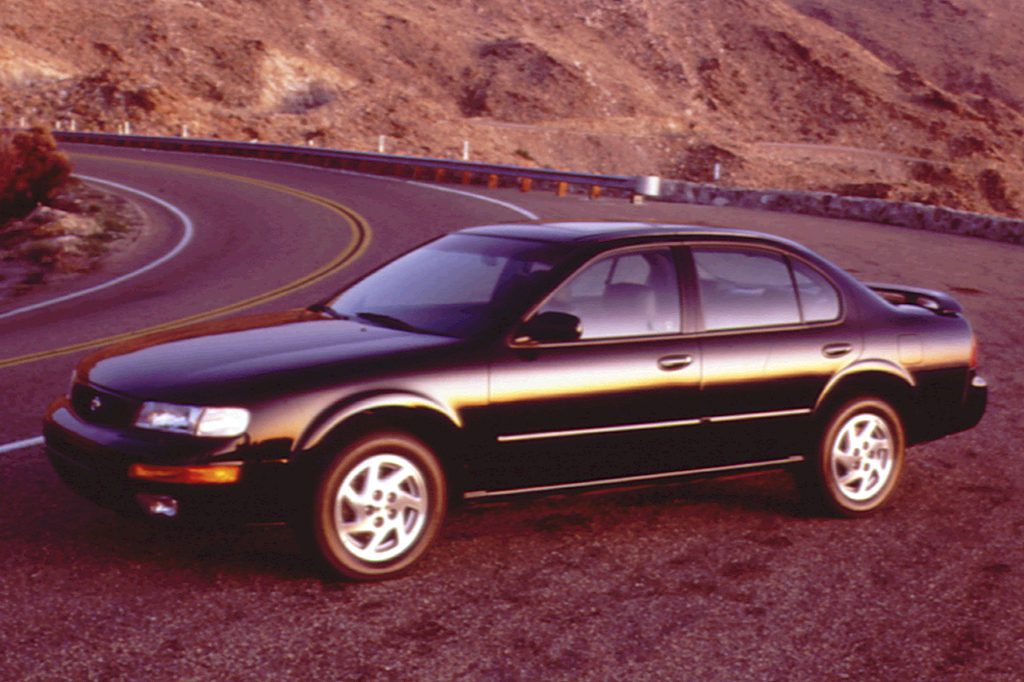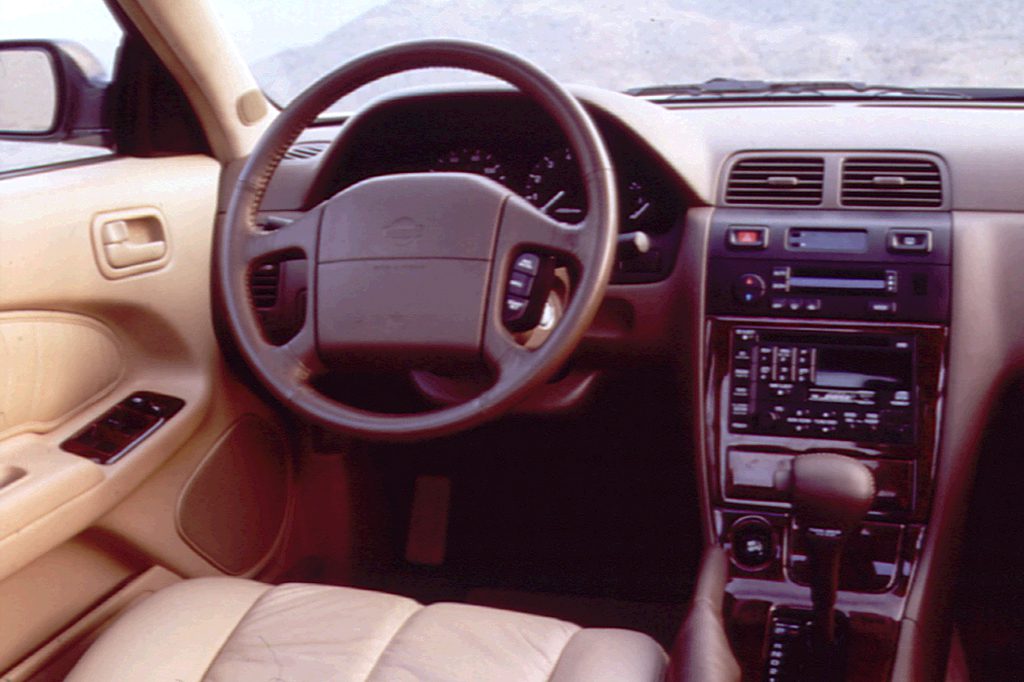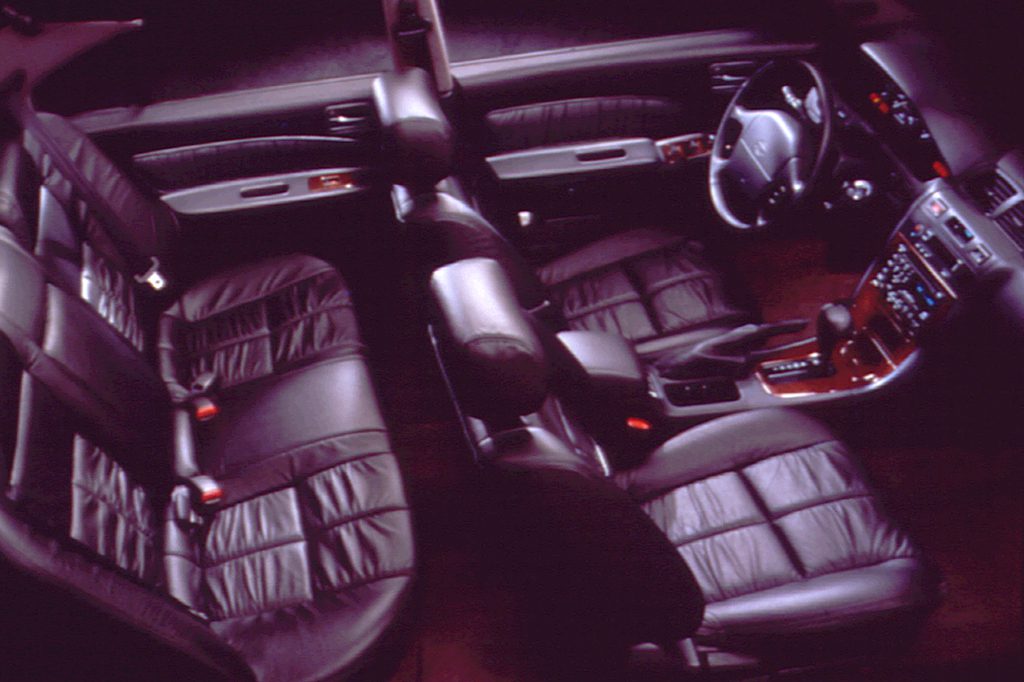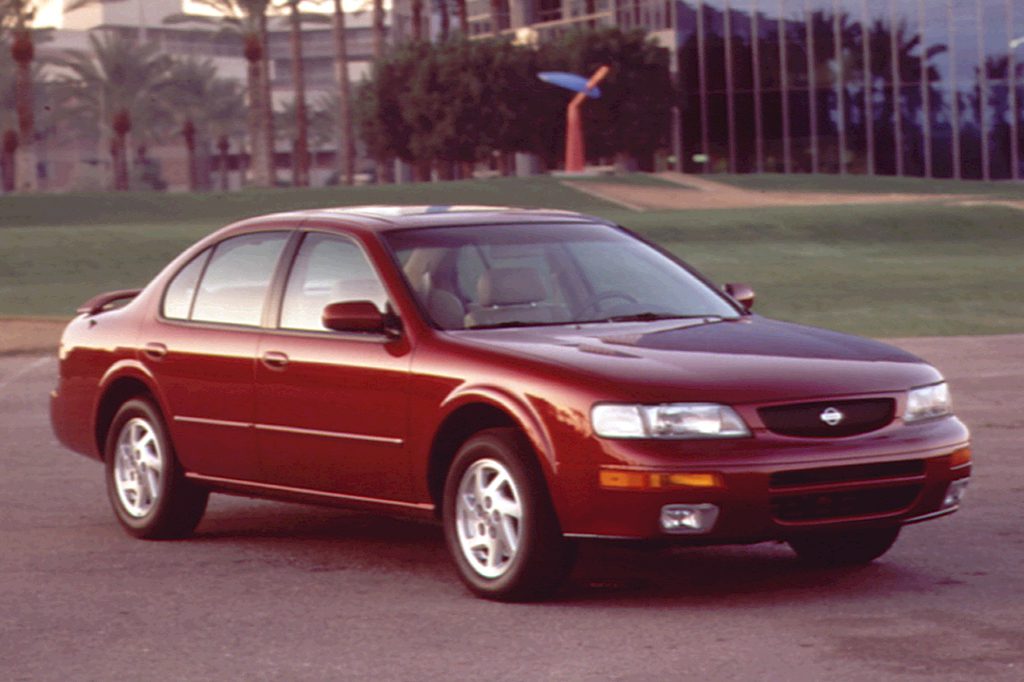| Midsize car; Built in Japan |
|
|
| Good condition price range: $1,600 – $3,600* |

1995 Nissan Maxima SE

1995 Nissan Maxima GLE

1995 Nissan Maxima interior

1995 Nissan Maxima interior

1995 Nissan Maxima SE
| Pros: |
|
| Cons: |
|
If you’re searching for a midsize sedan that reaches above the run-of-the-mill offerings, a Maxima of any 1995-99 vintage is definitely worth a trial run.
Overview
Nissan’s largest passenger car was redesigned for arrival as an early ’95 model. Front-wheel drive, V6 power, and 4-door sedan styling continued, but the new design was more rounded on a longer wheelbase. Model choices now numbered three, with the addition of a luxury GLE. Also available were a base GXE sedan, plus a sporty SE with a rear spoiler, firmer suspension, and wider tires. All Maximas shared a new aluminum 3.0-liter V6 with dual-overhead camshafts, rated at 190 horsepower. The GXE and SE came with a 5-speed manual transmission. An electronically controlled 4-speed automatic was optional on those models and standard on the GLE. Antilock brakes were optional on all except the 5-speed GXE.
Yearly Updates
| 1996 Maxima The GLE edition added a 4-way power seat for the front passenger, which was also newly optional in the SE. Also, a large cupholder was installed in the central console. |
| 1997 Maxima Maximas earned a facelift for 1997, led by a fresh front end with a different grille and brighter headlights. Rear ends wore new taillights and a redesigned trunklid. |
| 1998 Maxima Front side airbags are made available on SE and GLE versions of the Maxima. |
| 1999 Maxima Available traction control was the main addition as Nissan’s flagship headed into the final year of its current design. All models also got minor trim revisions and a standard antitheft engine immobilizer. A redesigned, more-powerful Maxima debuted in spring 1999, as an early 2000 model. |
